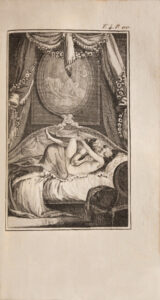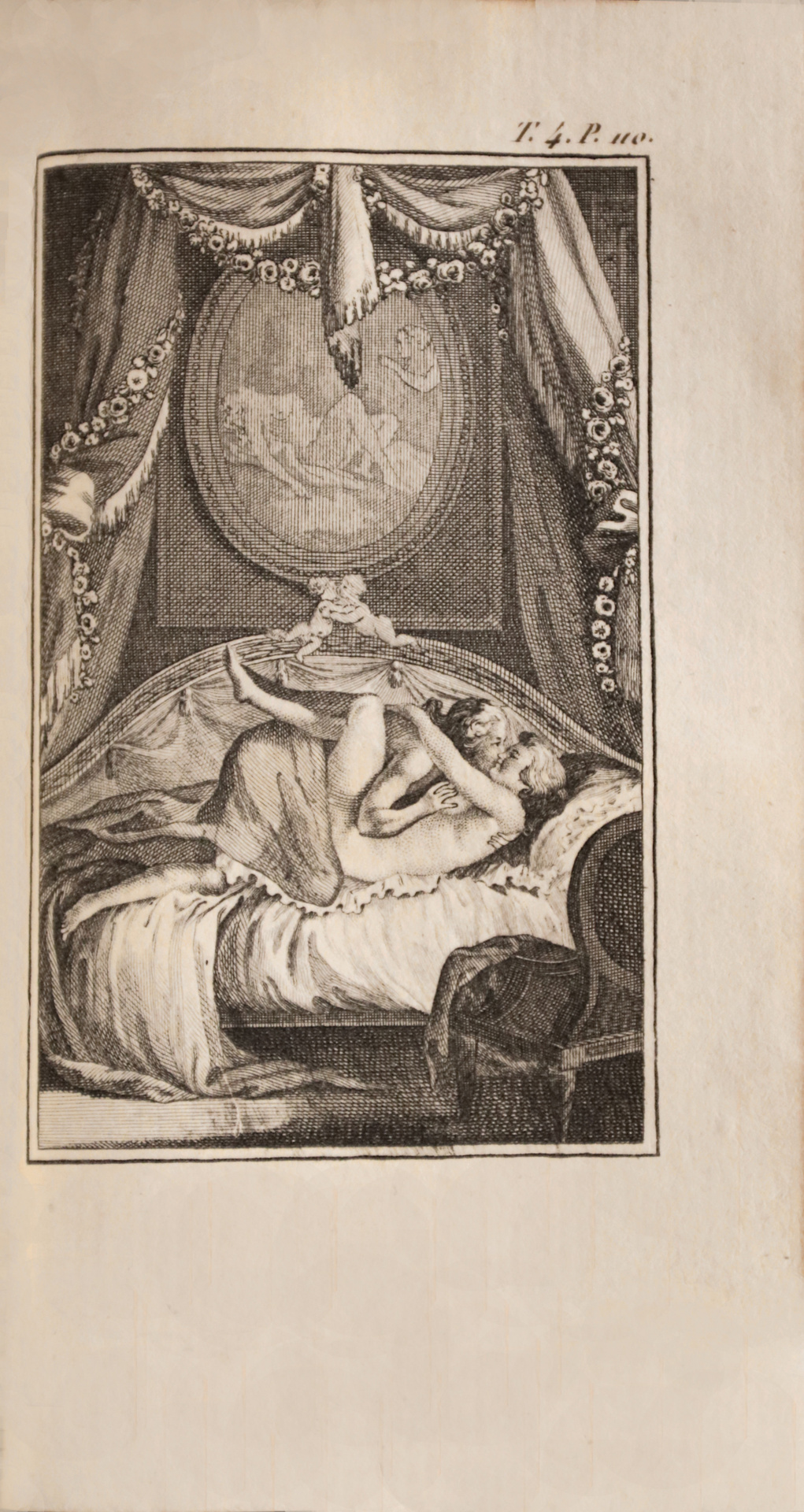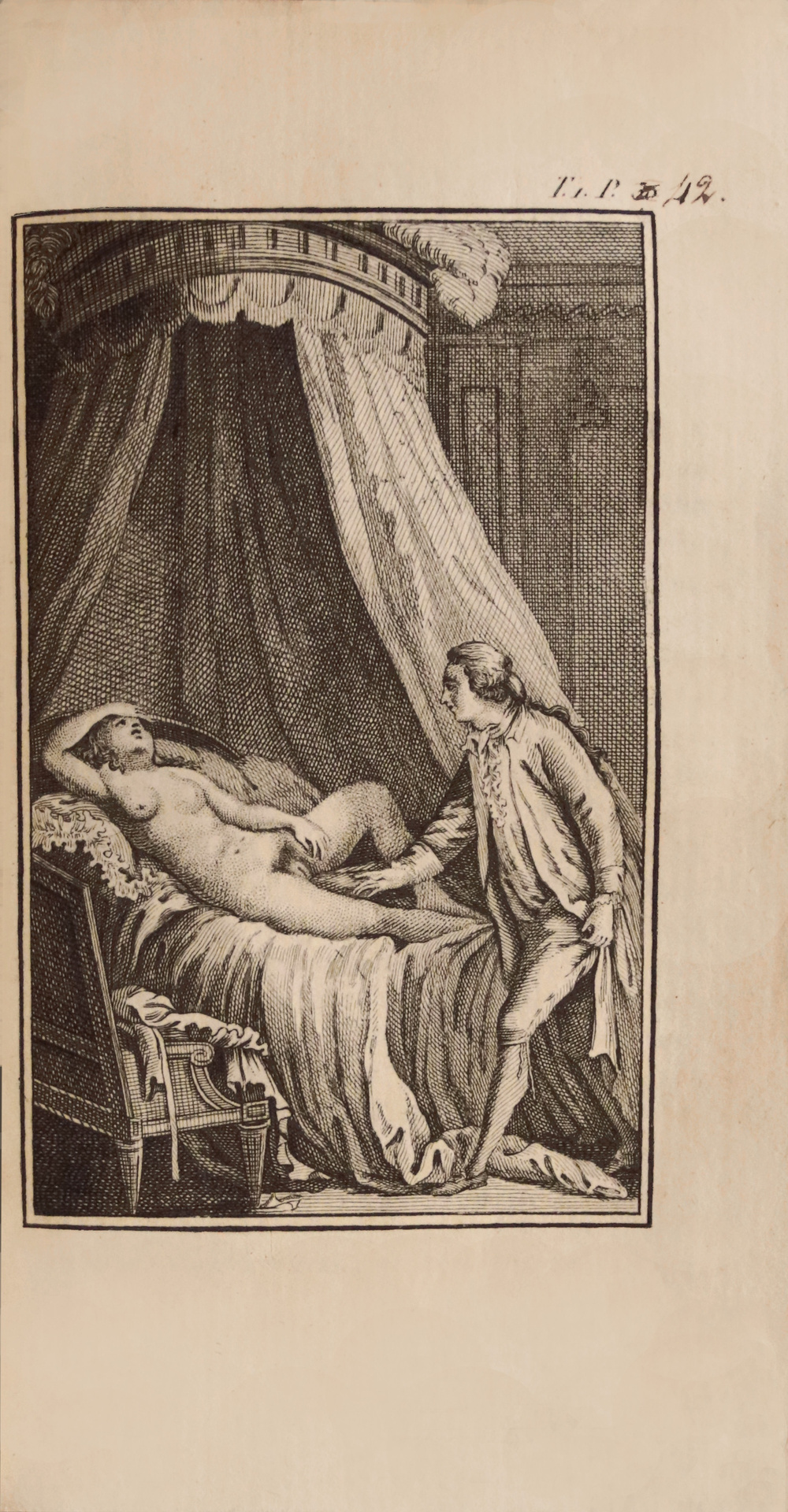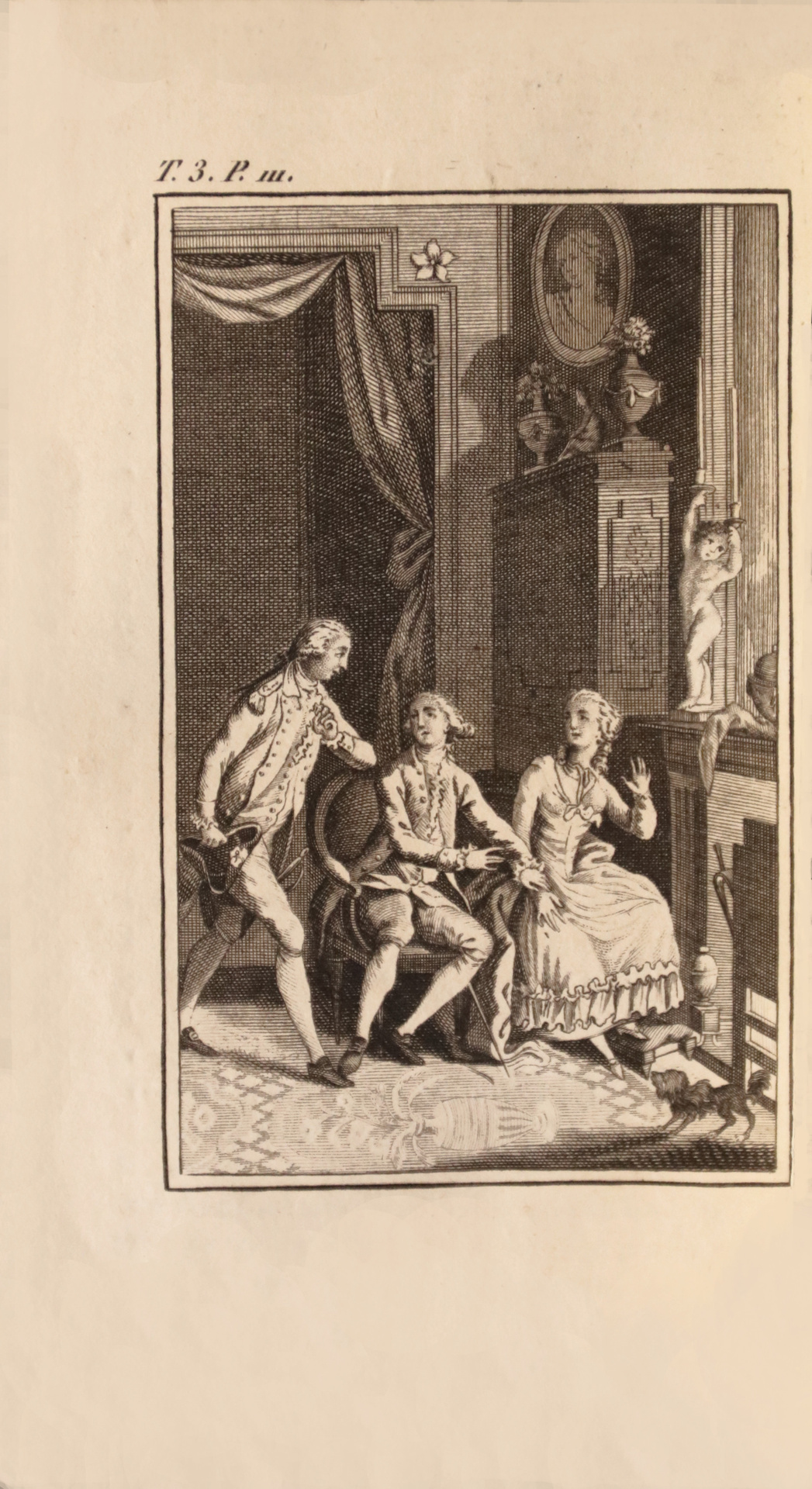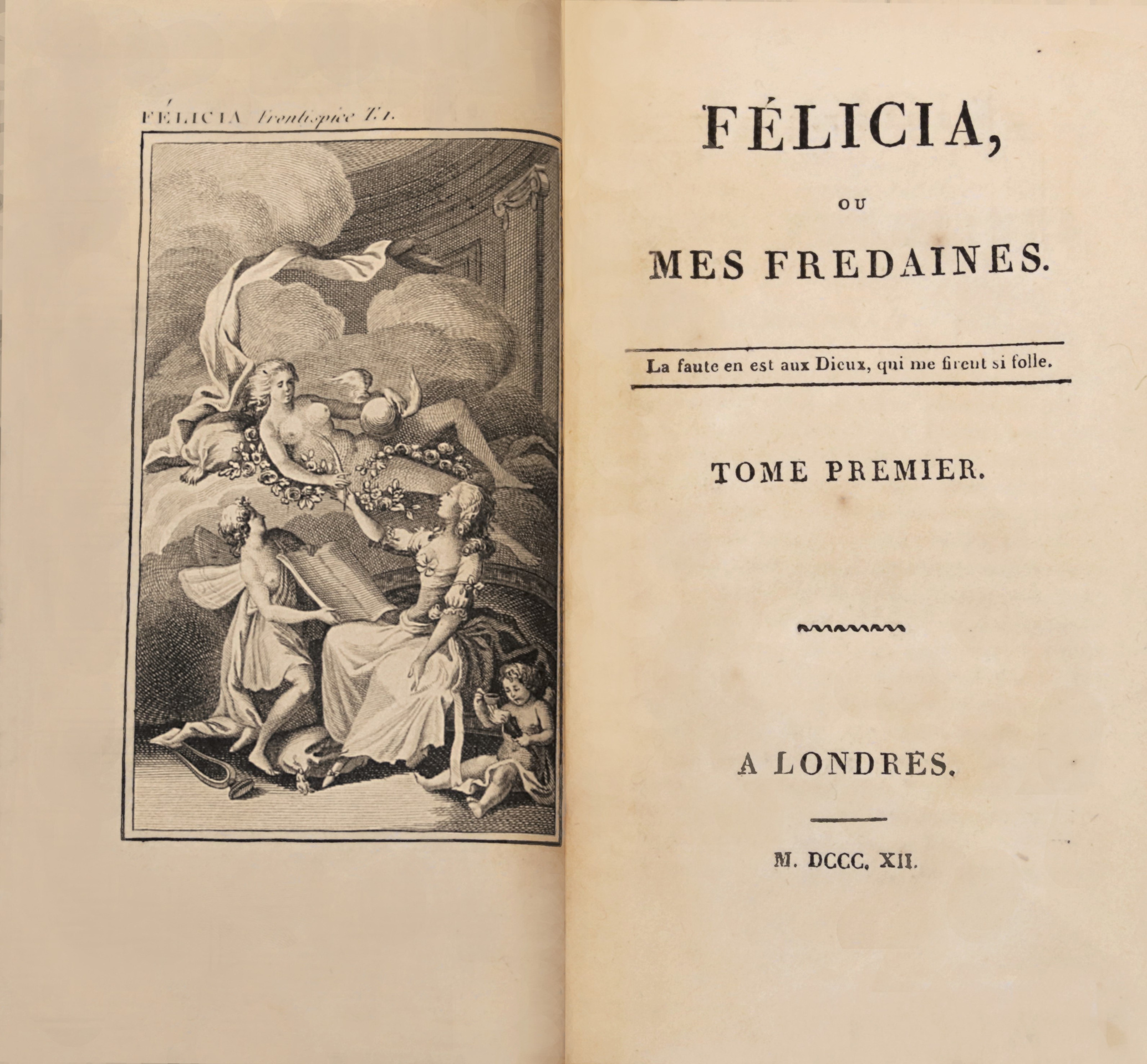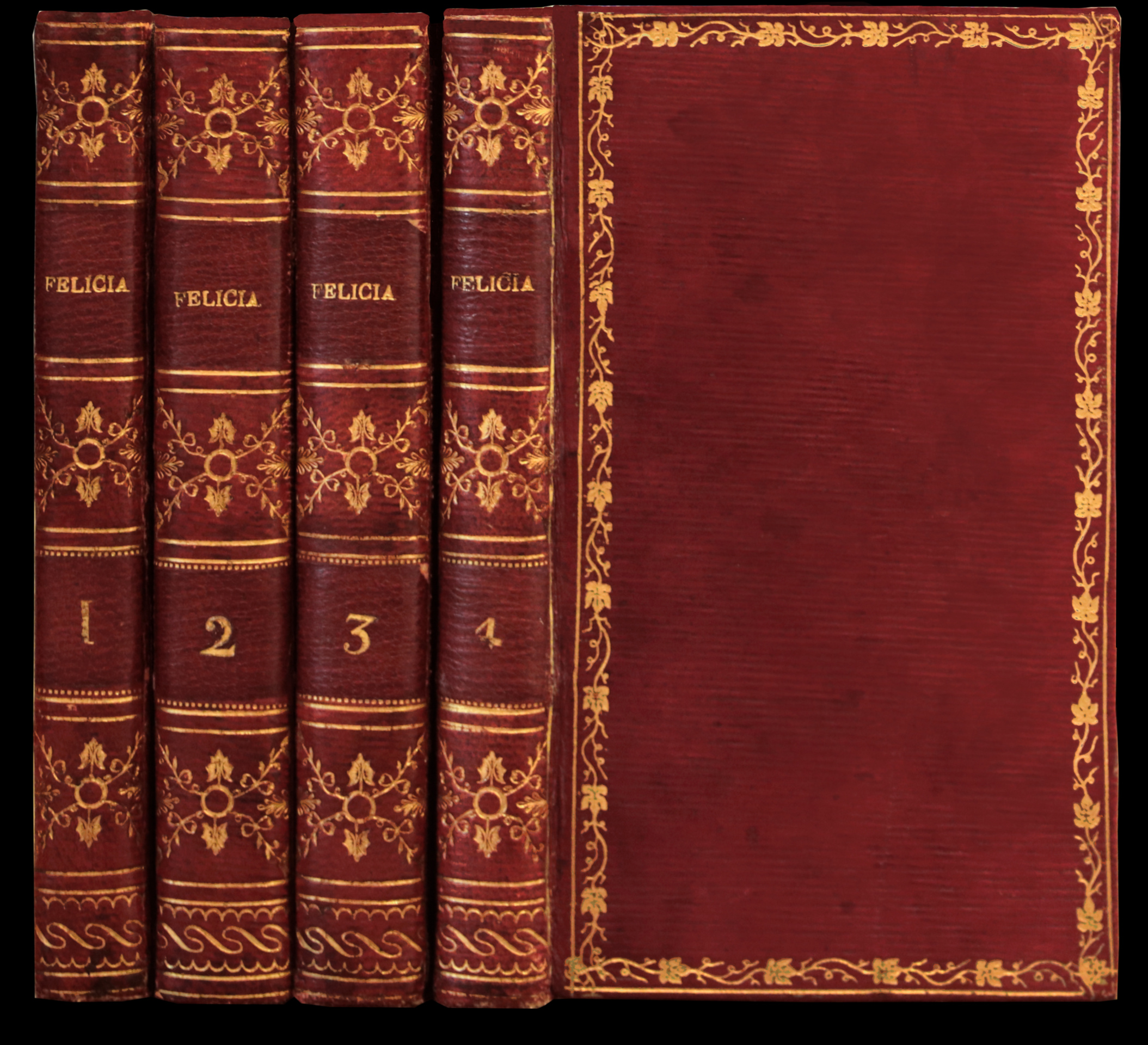Londres, 1812 [Bruxelles].
4 volumes in 16mo [128 x 74 mm], with 24 illustrations according to Borel.
I/ (2) ll., 1 frontispice, 100 pp., 7 illustrations out of collation.
II/ (2) ll., 130 pp., (1) l., 6 illustrations out of collation.
III/ (2) ll., 112 pp., 6 illustrations.
IV/ (2) ll., 108 pp., 4 illustrations.
Full straight grained red morocco, gilt floral border around the covers, flat spines illustrated with gilt fleurons and gilt fillets, gilt inner border, gilt edges. Contemporary binding.
Superb illustrated edition of this important erotic novel by André de Nerciat which was in fact his first book.
Most of the works that Nerciat published are written in a free way, we can only judge on the following confession that he made in one of his forewords: “The intention of the author, he says, is to engage women to not be so shy and to cut the difficulties; the husbands not to scandalize themselves easily and knowing when to take their part; the young people to stop ridicule the sentimental lovers, and the ecclesiastics to love the women in spite of their clothing and to arrange with them without compromising oneself in the spirit of the honest people.”
“About knight André-Robert Andréa de Nerciat, cosmopolitan and society adventurer, diplomat and secret agent, librarian such as Casanova and famous author of pornographic works, one only knows, except for a few details, what Guillaume Apollinaire wrote in 1911 in his important edition of the Oeuvres. He is yet one of those whose career and writings would deserve further investigations.
Nerciat never stopped writing during the troubled time of the Revolution, and his novels, at first crude, became more and more spicy. “Le Diable au corps”, that he wrote in 1776, would only be published in 1803. Félicia’s adventures will seem innocent compared to the great achievements of a marquess and her coterie commented in a novel full of obscenities, to zoophilia. In 1792, Mon noviciat tells the beginnings of the libertine Lolotte and the experiences of her mothers and of their servant Félicité. All taboos – incest, sodomy, sapphism – are blithely shake up, but Nerciat, carefully, because of the circumstances, pretends to give its dirty stories a political significance. Indeed, his purpose is to depict “naturally the depravity of morals of this naughty nobility […] that we wisely for ever chase away of France”. His statement will be patriotic and edifying: “I then decided to bear the cost of this edition, too happy […] if the sight of so many licentious images, the kind to turn every good democrat’s stomach, can aggravate the patriotic hatred that we, as frank nationals, owe to those Epicure’s pigs even more.” The same year, Monrose is the sequel to Félicia, where the hero, after for volumes of adventures, gets married and concludes: “Let’s say about licentiousness, even more than about war: it’s a good thing when one’s done with it.”
Nevertheless, if Nerciat is a pornographer, it is in a different way than the “Venus in the Cloister” or the “Portier des Chartreux”. As far as he’s concerned, eroticism proceeds from a philosophy of life, according to which sexual satisfaction is one of the key elements of happiness and blossoming of the individual. His universe doesn’t know any metaphysical extension and his characters think less than ever of the next world and forthcoming rewards. No place neither for feelings, eroticism is limited to unrestrained pursuit of enjoyment, founding a moral of pleasure. Only physic matters, always asked to overcome its performance, but this eroticism, on the opposite of Sade’s, never contains any constraint nor cruelty. All things considered, even if his novels mix all classes in the only equality that seems real to him, this pleasure only belongs to an elite who challenges the bourgeois morality and vulgar taboos. By an excess of happy outburst, this world is a sort of sexual utopia, where men and women meet in a perfectly balanced supply and demand. To show off the methods, Nerciat managed to invent a language of his own, to create a new speech for pleasure and demonstrate a surprising verbal invention.
The young Stendhal who read at the same time La Nouvelle Héloïse and liked to think of himself “both as a Saint-Preux and a Valmont” – was delighted by Nerciat’s little volumes stolen in his grand-father Gagnon’s library: “I am becoming absolutely crazy; to possess a real mistress, at that time the object of all my desires, would not got me absorbed in a equivalent flood of voluptuousness.” (Raymond Trousson, Romans libertins du XVIIIe siècle).
The superb illustration of the present edition is composed of a frontispiece and 23 illustrations engraved by Elluin from Borel.
Superb copy preserved in its uniform contemporary binding in straight-grained red morocco finely decorated.
